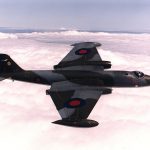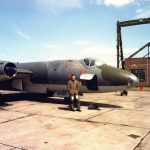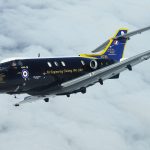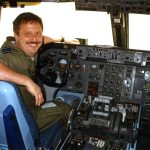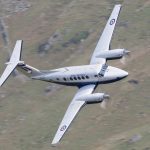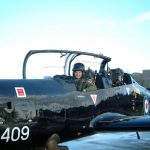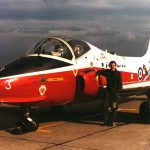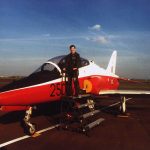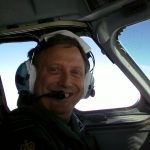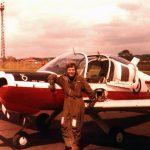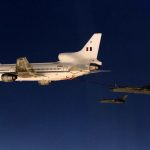IRT Debrief Digest – Capt Steve Oddy – September 2023
My comments are in red.
Aircraft Preparation.
The pre-flight inspection should include a check that the windscreen is clean and undamaged, but examiners frequently find the windscreen dirty and smeared. The problems that this will generate when landing into a low sun do not seem to be understood. Loose articles should be kept to an absolute minimum and heavy items should invariably be secured.
Part-NCO Compliance.
Part-NCO requires the carriage of both the aircraft POH and an ELT or PLB as well as the visual interception signals. Not all schools are as assiduous in their compliance with this as they should be.
Passenger Care.
The IR examiner will act as a passenger and so, as well as giving any briefings required by current legislation, applicants should ensure that their passenger is correctly strapped in whenever the checklist requires such an action.
Cowl Flaps.
The use of cowl flaps to regulate Cylinder Head Temperatures is not understood by most applicants who mechanically set the position of the flaps without reference to CHT. On the Seneca V, the CHTs are only visible on the ‘Engine’ page; few applicants check this page in the air.
See the separate set of notes on the use of Seneca V Cowl Flaps in the Handling Tips menu.
Radio Navigation Aid Checks.
At many airfields one can properly check Nav 1 and Nav 2 using the ILS as well as checking the ADF and DME on the ground. On a few airfields such as Southampton there is also a VOR which must be checked. We would expect applicants to have been taught how to fully check all of these aids but this is not often the case. The FNPT II provides the ideal opportunity to teach and practice these checks. In addition, applicants are generally unaware of the propagation characteristics of an NDB which would allow them use some other beacon for their ADF check if their home NDB were to be unserviceable. On aircraft where there is a single DME slaved to either Nav 1 or Nav 2 (such as the G1000), the DME only needs to be checked on one box on one frequency – the frequency that will be used for departure.
SSR.
Mode S transponders are required for flight in CAS. Applicants must be familiar how to input the aircraft identifier (callsign/Flight ID) at start-up. AIP instructions regarding the use of code 2000 on shut-down should be followed.
GNSS.
The use of GNSS is expected during the IRT. A minimum of RNAV 5 is required in en-route CAS in the UK and some routes require RNP 1. Navigation equipment must have an approval in the aircraft’s POH and, if appropriate, have a current database.
Volume Controls.
Many applicants seem to be unable to set up the volume and squelch controls for the intercom, comms and nav boxes. They seem especially unaware of which knobs control intercom and radio volume. Time should be taken to ensure a reasonable balance between all of the boxes – especially so that ATC can be heard above the ATIS when in CAS. Corrections should be made in the air when it becomes obvious that a nav box is too loud.
Heater Checks.
Most aircraft heaters do not produce hot air immediately. Switching the heater/defrost on, feeling for an air flow, pronouncing it ‘serviceable’ and immediately switching it off does not check it’s working. The heater should be left ‘on’ while other checks are done and then re-checked a bit later.
Master Caution.
G1000 equipped aircraft have a master caution indication which will illuminate or flash (depending on installation) to indicate a problem. If this illuminates (for example when the pitot heater is tested in the after-start checks) it must be cancelled/acknowledged immediately. If this is not done then further cautions will not be made obvious to the pilot.
Taxiing.
Speed and accuracy on the ramp has been a concern. Given the tight clearances and the chance of people appearing from behind parked aircraft, walking pace should be maintained on the ramp and yellow lines should be followed precisely. In addition, instrument checks should never be carried out while still on the ramp; ideally they should be carried out using the natural bends in the taxiway and sharp zig-zags should be avoided. Some applicants have tried to combine instrument checks with full-rudder checks, resulting in wild swings across the taxiway and poor lookout. Many applicants are using power against brake when taxiing. Some applicants are also unsure of how to use differential power to assist with turns.
Checks.
Applicants are still paying lip service to checks – saying but not doing. Examples are:
- checking altimeters on the ramp without knowing the ramp elevation;
- checking prop levers and continuing even though there was no discernible decrease in RPM on one of the engines;
- not commenting on engines outside idling limits;
- not moving controls to full deflection during full and free checks or not checking the rudder at all;
- over-speeding services by not checking limitations; not checking that 3 greens have been obtained;
- not checking that the flaps have moved to the selected position;
- not confirming that max rpm has been set when on an asymmetric approach;
- claiming that altimeters have been cross-checked when both were on different pressure settings;
- not checking the magnetos properly at the end of the flight.
When a checked item has been out of limits (ie altimeter, magnetos) and cannot be fixed, it is up to the applicant to declare that the aircraft is unserviceable and abort the flight. With regard to excessive mag drops, applicants should know how to attempt to clear the problem without examiner intervention. Whilst it is not an integral part of the IRT, given that applicants will have passed the examinations for an ATPL and for the MEP class rating, examiners will expect applicants to have a reasonable understanding of the workings of the aeroplane they are using.
Standards Document 1 states that checks should be verbalised as much as possible.
G1000/950.
When we brief applicants we will make it clear that they can display and reference the G1000 moving map throughout almost all of the flight. In addition, the proposed route can be entered as a flight plan. Steering information can be used during all but the 2 approaches; we will also remove the moving map for the hold and procedural approach. Examiners may remove GNSS information for a period during the off-airways en-route section in order to confirm that the applicant is aware of position and can navigate by VOR/DME/ADF alone. Auto-ident of the VOR/ILS is acceptable (indeed encouraged). There is no requirement to select ‘ANT’ in the air when identifying an NDB if the ADF needle only shows when a signal is being received (as in the Seneca V installation).
GNS430/530. Not Fitted to the Seneca V
The permitted use of the GNS430 series is similar to that of the G1000.
Icing.
De-icing and anti-icing equipment should be used with regard to actual temperatures and with the assumption that there may be cloud at all operating levels. Whilst regular checks of OAT should still be made, the examiner should only be asked to check for ice when there is a realistic possibility that ice could have formed.
Some applicants have been unaware that the windscreen defrost on many aeroplanes also requires the heater to be ‘on’. Many applicants still do not understand difference between de-icing and anti-icing. When to use the windscreen de-ice spray or heated panel is also unclear; guidance on the use of the heated panel is in the POH supplements. See the guidance on use of the Seneca V Ice Protection system on this website.
It seems that many applicants have never been expected to operate these systems in reality.
Departure Brief.
Although we do not require a departure brief, we will listen to one that is given. Some applicants have stated that, between lift-off speed and ‘blue line’ speed, they will force land if an engine fails. Whilst the possibility of forced landing must be considered, the initial action should be to climb away on one engine once there is no more runway available; only if a climb at Vyse cannot be achieved should a forced landing be undertaken. If taking off in marginal conditions, the applicant must have thought about the real-world consequences of an engine failure and not trot out “… I’ll carry out a visual circuit to land” in all cases. A departure diversion airfield may need to have been considered.
Crosswind Take-off.
Sometimes we see a lack of crosswind technique when there is a significant crosswind. However, the most common error is for full crosswind technique to be used when there is 5 knots or less of crosswind. This often results in the downwind wing lifting. Applicants should understand that sufficient aileron is required to maintain wings level on the take-off roll – no more, no less. Some of this problem comes from applicants deciding on their take-off technique with reference to the ATIS wind rather than looking at the windsock or listening to the wind passed to them with their take-off clearance.
Throttle Handling.
Some applicants release the throttles and place both hands on the yoke for the take-off. In the event of an engine failure at around 60 kts they would be hard pressed to stay on the runway. The throttles should be held until the aircraft is safely airborne – say, when it’s time to retract the gear.
Seneca V Unstick Speed.
Aircraft POHs give a specific take off speed. The Seneca V POH gives a take off speed of 81 kts. If the aircraft unsticks before this speed then control may be lost in the event of an engine failure. However, delaying unstick to greater than this speed means that scheduled take off performance will not be achieved. Many applicants are delaying any aft stick movement until unstick speed resulting in unstick around 10 kts fast and often, because they are holding the yoke forward, potentially dangerous porpoising during the take off run.
The yoke should start to be moved gently aft around 5 kts early, allowing a final ‘rotate’ at the correct speed to unstick the aeroplane. A number of applicants have allowed the nose to rise after take-off and so have taken a considerable time to reach Vyse and then climb speed. In a twin, the establishment of these speeds after take-off should be a priority. Gear retraction should normally be delayed until the possibility of landing back on the runway has gone.

